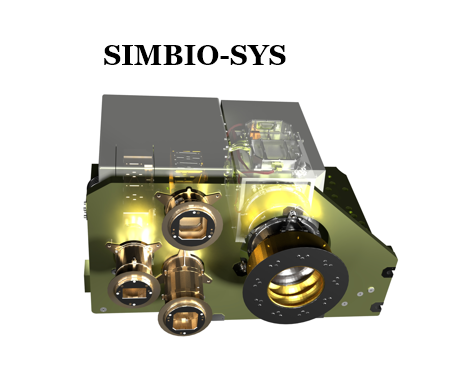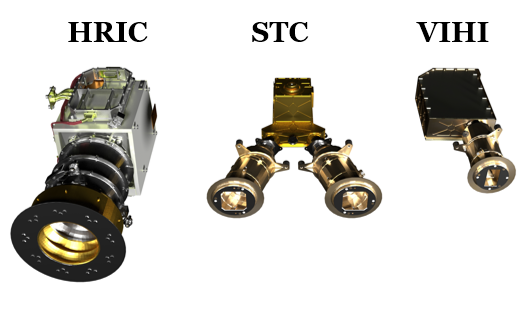
The Bepicolombo mission, named after the Italian scientist Giuseppe Colombo, is Europe’s first mission to Mercury, in collaboration with the Japan Aerospace Exploration Agency (JAXA) . It launched on 20 October 2018 and will arrive on Mercury in 2025 (click here to see where the spacecraft is in this moment). It is composed of two spacecrafts: the Mercury Planetary Orbiter (MPO), build under the European SPace Agency (ESA) responsibility and the Mercury Magnetospheric Orbiter (MMO), built by JAXA. The first will focus on the planet surface and its interiors, while the latter will focus on the environment around Mercury.
SIMBIO-SYS
Our team has the responsibility of the Spectrometer and Imagers for MPO Bepicolombo – Integrated Observatory SYStem (SIMBIO-SYS), an integrate package for the imaging and spectroscopic investigation of the surface of Mercury in the BepiColombo ESA-JAXA mission. It incorporates capabilities to perform medium-space resolution global mapping in stereo and color imaging using two panchromatic and four broad-band filters, respectively, as well as high resolution imaging with panchromatic and 3 broad-band filters. Moreover, it will perform imaging spectroscopy in the 400-2000 nm spectral range. SIMBIOSYS is composed of three optical heads with a common main electronics:
- The High Resolution Imaging Channel (HRIC), a high resolution telescope with colour capabilites capable of acquiring images at a resolution of 6-12 m/px at the periherm.
- The Visible Infrared Hyperspectral Imager Channel (VIHI), a hyper spectral imager in the spectral range of 400-2000 nm, with 256 spectral channels, that will map Mercury in order to provide the global mineralogical composition of the surface at a resolution of 120 m at the periherm.
- The Stereo Channel (STC) will provide global color coverage of the surface in full stereo at a resolution of 60 m at the periherm with the aim of defining the main geological units, large scale tectonic features, impact crater population and volcanic edifices. The STC design represents a novel approach for a stereo camera, and for the purpose of allowing the global mapping of the Mercury surface, the stereo imaging capability and the colour acquisition of selected areas are based on two identical sub-channels, oriented with an offset of 20° from the Nadir direction.


Here below, you can view a 3D representation of the optical path of STC. Use the mouse left button to move it around and the mouse wheel to zoom in and out.
For more details, please visit the BepiColombo mission homepage.